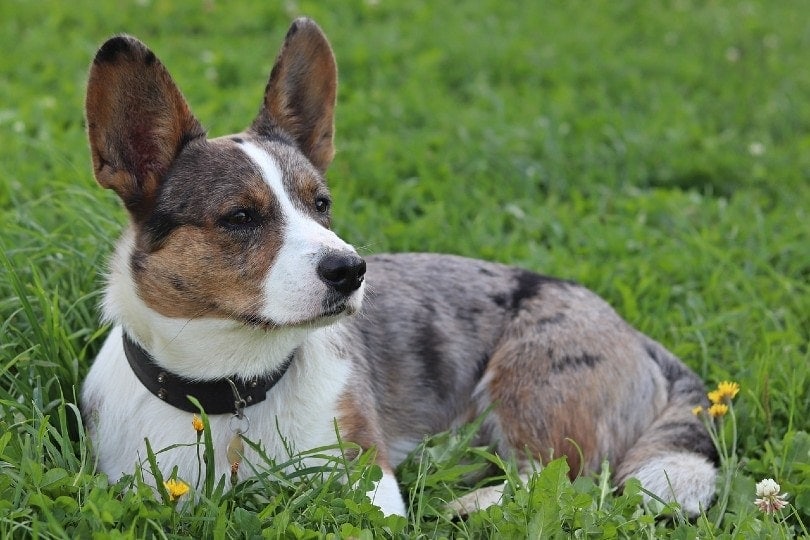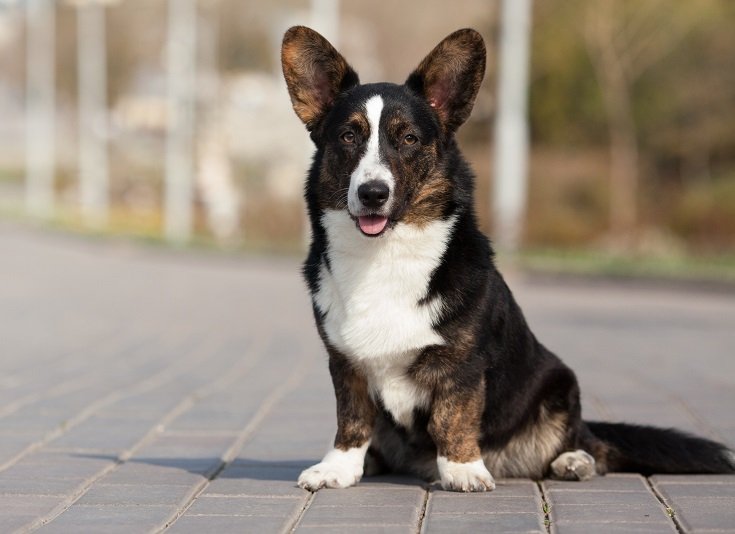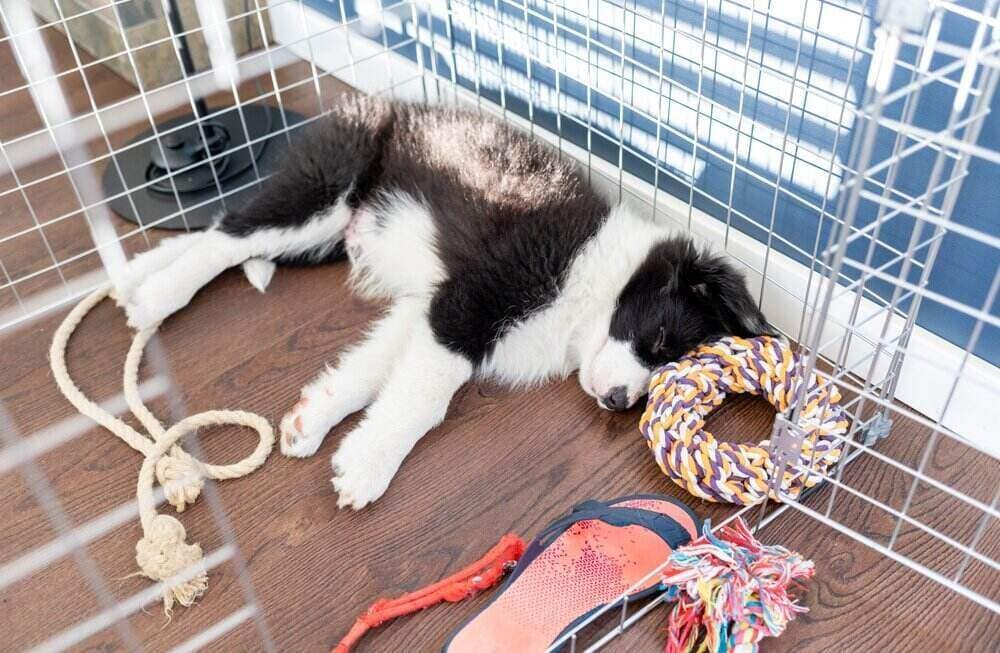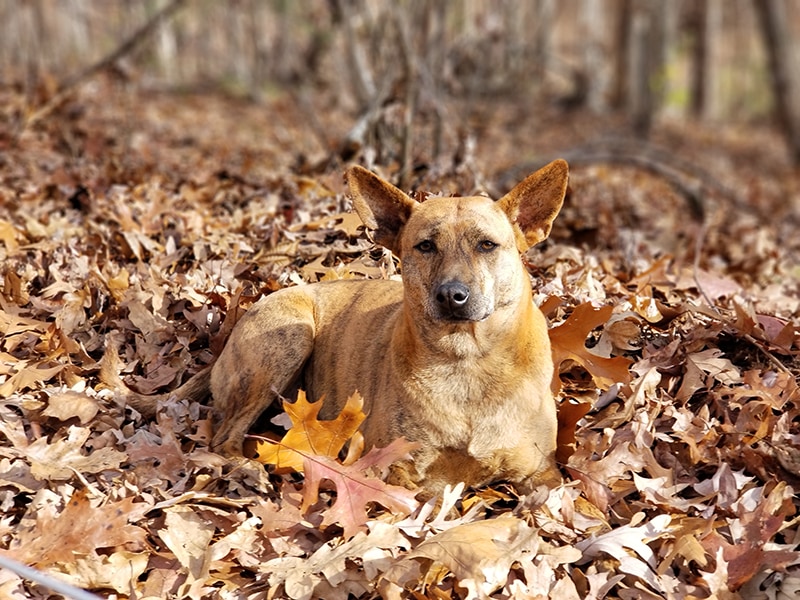Brindle Corgi: Pictures, Facts & History
By Jordyn Alger
Updated on

Click to Skip Ahead
Corgis are adorable little dogs with countless fans. If you are considering bringing a corgi into your own home but want one that is a bit more unique, consider looking for a brindle corgi.
Brindle is generally considered a brownish color dappled with other coloration throughout. This unique design makes the brindle corgi more coveted to some, as it is rarer in the Pembroke Welsh corgi than in the Cardigan Welsh corgi. If you want to learn more about brindle color in both corgi variations, this article has you covered.
The Earliest Records of the Brindle Corgi in History
The Pembroke Welsh corgi originated in Pembrokeshire, a county in the southern part of Wales. It was bred as early as the 10th century and was employed as a cattle herder. But as the need for cattle-herding dogs gradually decreased, the Pembroke Welsh corgi saw its purpose go from being a farm helper to a show dog and a home companion.
The Cardigan Welsh corgi’s story is similar. Although it is believed that the Cardigan Welsh corgi came onto the scene earlier than the Pembroke, the breed is still recorded as being developed around the same time as the Pembroke. It originates from Cardiganshire, Wales, where it watched over herds of livestock.
Though records of the first brindle corgi are limited, brindle Cardigan corgis can occur naturally while Pembrokes cannot. It can be assumed that Cardigans have had brindle patterns for a long time, whereas the Pembrokes would require deliberate breeding.

How the Brindle Corgi Gained Popularity
As the need for livestock herding declined, the corgis slowly shifted into the role of companions. The Pembrokes, in particular, became the companions of some remarkably famous individuals, including Queen Elizabeth of England. The royal favor sparked the popularity of the Pembroke, and while the Cardigan also grew in popularity, it was not to the same extent as the Pembroke.
However, the brindle Pembroke is not accepted as a part of the breed standard by the American Kennel Club, making brindle Pembrokes rare. Brindle Cardigans are accepted as the breed standard, and the brindle pattern is much more popular in the Cardigan Welsh corgi.
Formal Recognition of the Brindle Corgi
For many years, the Pembroke corgis and the Cardigan corgis were considered the same breed despite their different origins. However, by 1934, the American Kennel Club officially recognized the differences between the two corgi varieties.
The Pembroke Welsh corgi was recognized in 1934, and the Cardigan Welsh corgi was recognized in 1935. Since brindle is not included in the breed standard of the Pembroke, the brindle Pembroke has never been officially recognized. However, the brindle Cardigan corgi has always been a part of the breed standard and has therefore been recognized as long as the Cardigan corgi itself.

Top 3 Unique Facts About Brindle Corgis
If you want to learn some fun facts about the Pembroke and Cardigan corgis, look at the top three facts we have compiled.
1. According to Legend, Pembrokes are Enchanted
Fairies are familiar characters in Welsh legends. In this legend, the Pembroke Welsh corgi is said to have worked for the fairies the way they would for humans. Pembrokes would herd fairy cattle, just as they would herd human cattle.
But they also had roles that they would perform only for fairies. For instance, Pembrokes were told to have led coaches for fairies and even allowed fairies to ride them into battle. To this day, the marks over the shoulders of a Pembroke are called its “fairy saddle.”
2. There are Obvious Physical Differences Between the Pembroke and the Cardigan Corgi
Although the Pembroke and Cardigan may look the same, with their short stature and stubby legs, the truth is that there are many physical differences.
The most obvious difference is the tail. The Cardigan has a long tail, whereas the Pembroke has a short and stubby tail. Beyond the noticeable differences, the Cardigan is slightly larger and heavier than the Pembroke, and the bone structure of the two is different. Pembrokes are more rectangular in shape, and the Cardigans are somewhat more rounded.
3. Cardigan Corgis Were Protected by Ancient Welsh Laws
Cardigan Welsh Corgis were so important to the ancient Welsh that there could be legal repercussions against anyone who injured or stole a Cardigan. This is because the Cardigans were vital assets to a family’s financial well-being, as they were pivotal in ensuring that the livestock was cared for.
Does the Brindle Corgi Make a Good Pet?
Corgis are very popular dogs. They make excellent companions, and they are affectionate, good with children, and open to strangers. They are a little less friendly to other animals but are generally not aggressive with them. Corgis are good at adapting, and there should be minimal issues as long as the pets are socialized and introduced properly.
In terms of grooming, brindle corgis shed just as much as other corgis, which tends to be a decent amount. Caring for a corgi’s coat regularly is vital to their health and may reduce the amount of shedding. Brushing two to three times a week is a good start.
- Also see: Best Dog Shampoos – Reviews & Top Picks
Conclusion
Whether you are looking for a Pembroke corgi or a Cardigan corgi, there are plenty of reasons to choose either of them. If you specifically want a brindle corgi, the Cardigan will be the easiest route since the brindle color in Pembrokes is rare. Yet, as unique as the color of your dog’s coat may be, we all know that the most important quality of our furry friends is what is on the inside.
Featured Image Credit: Liudmila Bohush, Shutterstock













